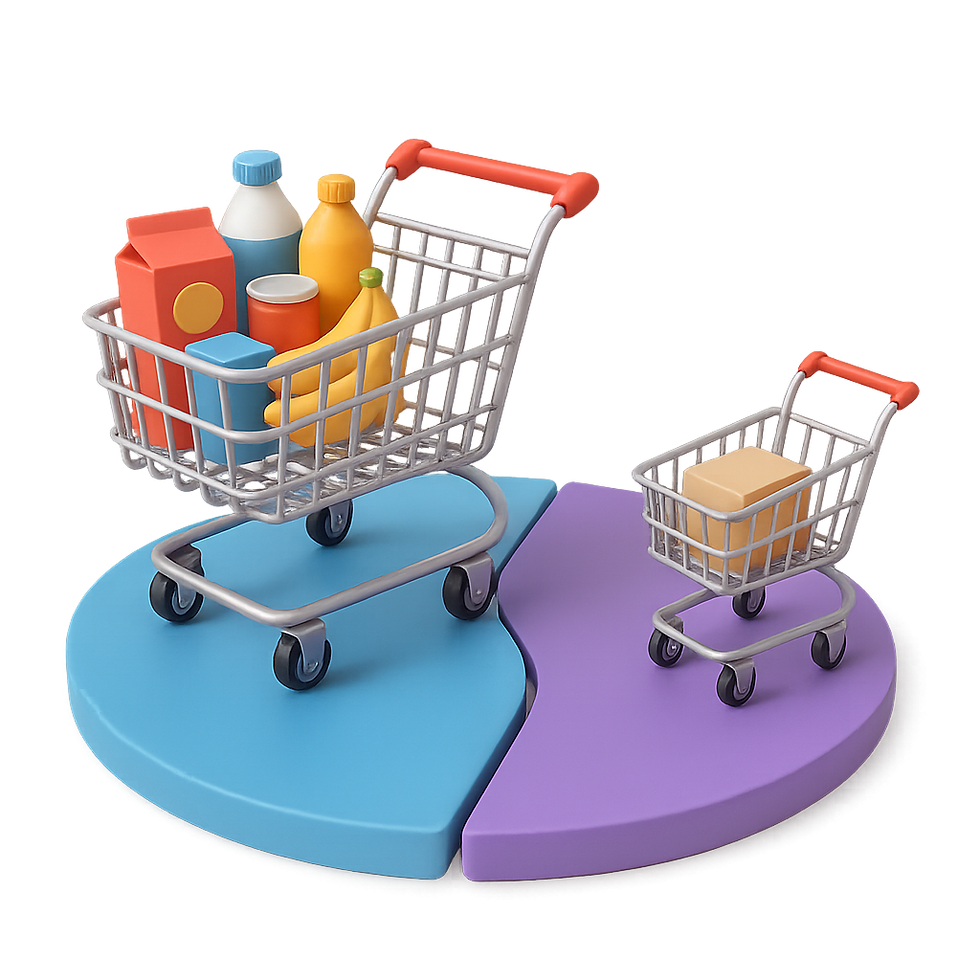Combating Rising CPCs: Tactics to Keep Your Google Shopping Ad Costs Under Control
- Adnan Agic
- Jun 8
- 3 min read

In today's competitive e-commerce landscape, rising Cost-Per-Click (CPC) rates on Google Shopping ads can quickly eat into your profit margins. As more businesses flock to digital advertising platforms, keeping your advertising costs manageable has become increasingly challenging. However, with strategic optimization and smart campaign management, you can combat rising CPCs while maintaining visibility and conversions.
Understanding the Rising CPC Trend
Before diving into solutions, it's important to understand why CPCs are increasing. Several factors contribute to this trend:
Increased competition in the digital marketplace
Seasonal fluctuations and high-demand shopping periods
Industry-specific competitive landscapes
Google's continuous algorithm updates
Changes in consumer search behavior
Effective Tactics to Control Google Shopping Ad Costs
1. Optimize Your Product Feed
Your product feed is the foundation of your Google Shopping campaigns. A well-optimized feed can significantly impact your ad performance and costs.
Use precise product titles: Include specific attributes that match high-intent search queries
Update descriptions regularly: Ensure they contain relevant keywords without keyword stuffing
Maintain accurate pricing: Keep pricing competitive and current
Use high-quality images: Clear, professional product images improve click-through rates
Include GTIN, MPN, and brand information: Complete data helps Google better match your products to relevant searches
2. Implement Strategic Bidding
Bidding strategies can make or break your campaign's cost-efficiency:
Utilize automated bidding with caps: Take advantage of Google's machine learning while setting maximum CPC limits
Consider time-of-day bidding: Reduce bids during historically low-converting hours
Device-specific bidding: Adjust bids based on the performance across different devices
ROAS-based bidding: Focus on return rather than just acquisition cost
3. Refine Your Campaign Structure
How you organize your campaigns directly affects your ability to control costs:
Product segmentation: Group similar products together for more precise bidding
Priority settings: Use high/medium/low priority settings to control which products appear for specific searches
Create separate campaigns for bestsellers: Allocate more budget to high-converting products
Implement negative keywords: Prevent your ads from showing for irrelevant searches
4. Enhance Product Landing Pages
Your post-click experience affects your Quality Score, which impacts your CPCs:
Improve page load speed: Faster pages lead to better user experience and potentially lower CPCs
Ensure mobile optimization: A seamless mobile experience is critical for today's shoppers
Maintain consistency: Your landing page should match what was promised in the ad
Include clear CTAs: Make the purchasing process intuitive and straightforward
5. Monitor and Analyze Performance
Regular analysis allows for timely adjustments:
Track performance by product category: Identify which categories deliver the best ROAS
Monitor search term reports: Discover new negative keywords and optimization opportunities
Analyze competitor positioning: Understand where you stand in relation to competitors
Conduct regular A/B testing: Test different approaches to identify what works best
6. Consider Seasonal Strategies
Seasonal fluctuations require proactive planning:
Budget allocation: Increase budgets strategically during high-demand periods
Early preparation: Start campaigns early for seasonal events to build quality score
Post-season analysis: Learn from each season to improve future campaigns
Long-term Strategies for CPC Management
Beyond immediate tactics, consider these long-term approaches:
Diversify marketing channels: Don't rely solely on Google Shopping
Build brand awareness: Stronger brands often enjoy lower acquisition costs
Develop customer loyalty programs: Returning customers typically have lower acquisition costs
Improve product quality and reviews: Better-rated products tend to perform better in Shopping ads
Final Thoughts
Rising CPCs are a reality in the digital advertising landscape, but they don't have to derail your e-commerce growth. By implementing these tactics and continuously optimizing your campaigns, you can keep costs under control while maintaining strong visibility and conversions.
Remember, the goal isn't always to have the lowest possible CPC, but rather the best return on ad spend. Sometimes, paying a bit more per click for highly qualified traffic can result in better overall campaign performance and profitability.
Stay vigilant, be willing to adapt, and keep testing new approaches to find the sweet spot for your Google Shopping campaigns. If you need help managing high CPC's or your google ads shopping campaigns feel free to Contact Us. About The Author: Adnan's expertise lies primarily in Google Ads strategies, conversion tracking, and e-commerce optimization. His in-depth knowledge of paid search advertising has helped numerous businesses across the World and internationally to enhance their digital presence and drive measurable results.



Comments